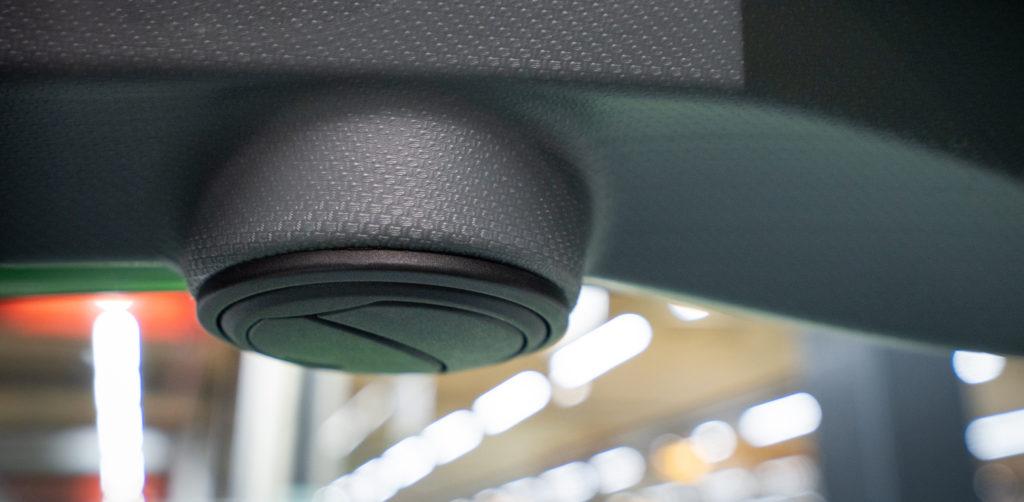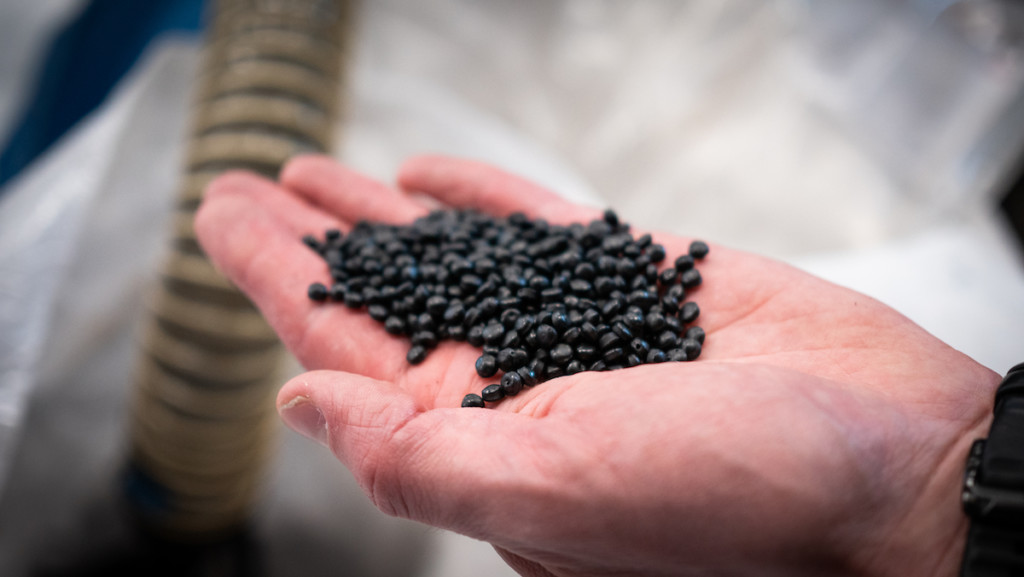Many businesses are looking to reduce their carbon footprint and implement concrete actions to achieve lower emissions. More and more enterprises are also wanting to invest in Finnish know-how, and VMT sure has that – after all, almost all of their products are made at Virrat in the Pirkanmaa region of Finland.
“We can help our customers by doing what we do, guaranteed,” says VMT Plastic Sales Manager Jere Olkkonen.
“If the product includes plastic parts, we can provide solutions for reducing your carbon footprint. Using recycled raw materials by itself achieves good things, but the optimisation of raw materials done during product design is just as important.”
The plastic products used by device manufacturers may not have been designed to be optimal plastic products originally, especially if the manufacturing volumes of the product have been smaller at first. As demand increases, it is worthwhile to check if different production methods and updated product designs could make it not only cheaper to make the product, but also more environmentally friendly.
“By stripping down the product design, you can save in terms of raw materials, costs, and emissions. Reducing the carbon footprint often begins with the small things,” Olkkonen emphasises.
“Our goal is not to sell as much plastic as we can. We want instead to help in creating the best possible product using plastic as the material.”

VMT Plastic solutions achieve significant changes
The measurements and forms of presentation associated with carbon footprints are not yet standardised enough to make it possible to give a clear answer to reducing them by means of recycled raw materials. If a company already has in place clear indicators and targets, it is easy for VMT Plastic to calculate and show what using recycled materials and implementing more careful designs could achieve.
“If not, it can however be assumed that we are far ahead and leading the charge in the use of recycled materials,” Olkkonen says.
“Generating exact numbers is a work in progress, but the impact on the carbon footprint can often be determined in a roundabout way. For example, you can calculate the benefits of reducing the volume of used raw materials by 30 percent by coming up with a new design. If no recycled raw materials have been used before, and only recycled raw materials are used moving forward, it is possible to quickly understand that the net impact is fully positive,” Olkkonen summarises.
More and more information is being required in Europe about the carbon footprints of products. Many large corporations are committed to for example the Science Based Targets or SBT indicators. These corporations have a clear mission to prevent to worst impacts of climate change, and they often require their suppliers to make similar commitments.
“I believe that many businesses are under pressure to get their suppliers to implement concrete measures. VMT Plastic is so far ahead here that we can provide ready-made solutions,” Olkkonensays.

Utilising recycled raw materials is worthwhile
Olkkonen wants to shake businesses into thinking about the manufacturing methods and materials of their plastic products, even if the component itself were not the most critical as measured by for example price. Plastic can also be used to replace more difficult materials, because metals for instance are not emission-free either.
“It may be that a plastic component made of recycled plastic is clearly better than, say, a metal part requiring several work stages. If only a few such components are used in a year, it might not be worth it to start making it with plastic. If more components are needed, significant savings potential or positive impacts on responsibility and environmental issues can be achieved by considering the manufacturing technology,” says Olkkonen. He also issues the reminder that VMT Plastic only makes technical components with plastic and no bulk products at all.
“These are plastic products that do not need to picked up on seashores later, and using a technical plastic product may in fact be the best of difficult choices.”
About ten percent of the world’s plastic products are recycled, and only one percent is recycled twice. Thanks to the raw materials they use, VMT Plastic is in that one percent. At the moment, half of the raw materials used by VMT Plastic is recycled, and the goal is to keep this number growing.
“The volumes we use are of course small on the global scale, but each step in the correct direction takes us closer to large-scale change,” Olkkonen states.
From design to assembly – and everything in between
What VMT Plastic does best is design and the production of comprehensive services, manufacturing included.
“We know our raw materials so well that you can get the most of us by involving us as early as in the design stage of the product. In this way, we can help in choosing the right recycled materials and ensure that the product design is the best overall,” Olkkonen explains.
VMT Plastic can help its customers with assembly too after the manufacturing is complete, providing the customer with a fully completed product package.
“This means that the customer does not have to screw, drill, and adjust dozens of components into one, but we will do all of this on their behalf at Virrat instead.
Olkkonen reminds everyone that the skills and vision of VMT Plastic are at the disposal of all customers.
“You can let us worry about the design, manufacturing, and assembly of plastic components,” Olkkonen concludes.
